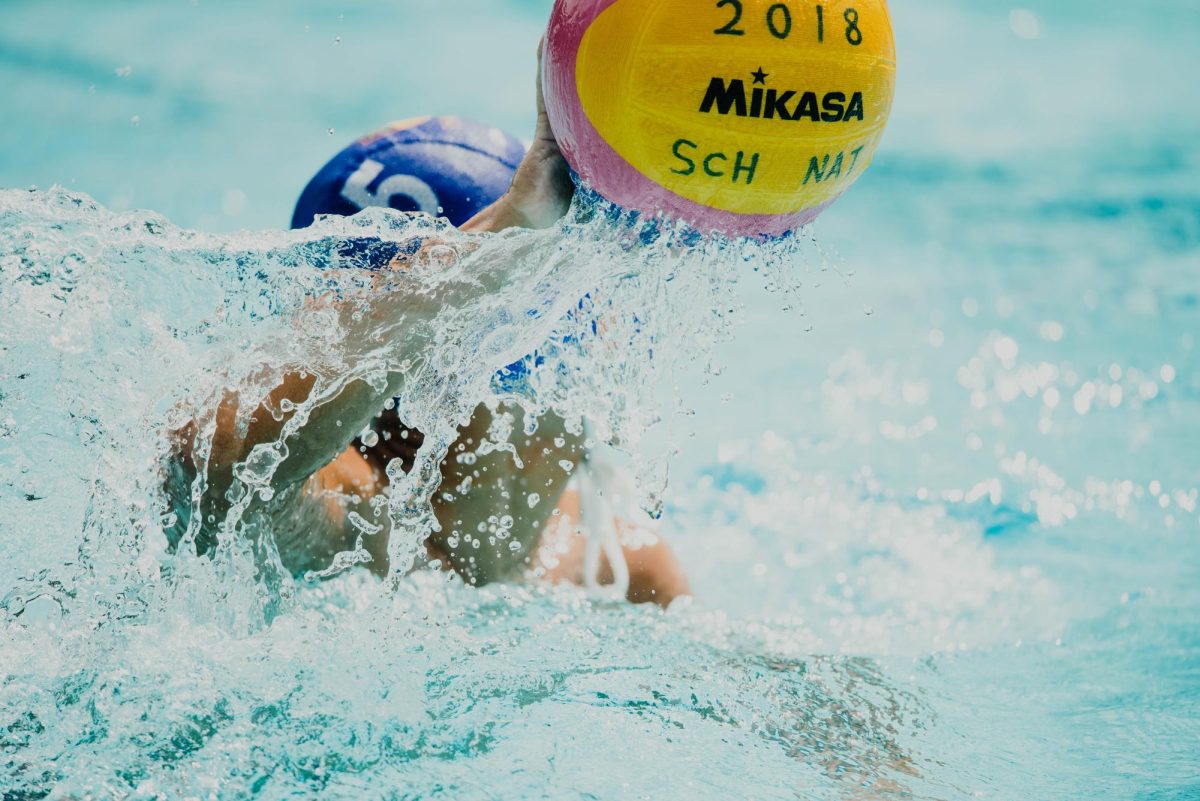With summer right around the corner, the wave of water sports has flooded American communities. However, year after year, one activity in particular is often overlooked: water polo.
The English sport, originally known as ‘football in water,’ began in the 1870s as an attempt to bathe and learn to swim at the same time. According to the Collegiate Water Polo Association (CWPA), this ‘aquatic football’ arrived in the U.S. in 1888 and was instituted into the Olympics in 1900. By 2017, a community of 45,000 water polo players had formed in America alone, scoring its spot as one of the fastest-growing sports in the country.
Although its rules and format have been heavily changed since its creation, the basics of water polo are relatively simple. The game is played in a six feet deep pool with seven players (six field players and one goaltender) on each side. Players pass the ball and throw it into the net on the opposite side of the pool to score.
Perhaps the most wondrous part of the game is its accessibility. All that’s required for a recreational game of water polo is a pool, two nets, some people and a ball. However, even though these elements give the game great appeal, many high schools across the nation have yet to pick up the growing trend.
The CWPA goes on to say that out of the 20,469 high schools across the nation that offer water polo, only 881 high schools sponsor the sport for girls and only 862 high schools sponsor it for boys.
This raises the question: how could water polo be implemented at Communications? Well, even though there is no pool in Wall Township designated for high school sports, Wall High School and other local high school swim teams compete at the Neptune Aquatic Center and the Atlantic Club.
CHS health and fitness teacher Jennifer Baldaccini finds the idea of CHS students joining in on the water sport totally possible, to an extent.
“We couldn’t actually do water polo in its proper environment, however, we could modify it. If we were to modify it, it would look very similar to a handball game,” Baldaccini said, believing that CHS has already introduced the sport to some degree. “It [water polo] is very similar to the scooter handball that we play: the goals are small, you’re down low, and your mobility’s a bit limited,” Baldaccini said.
Although CHS hasn’t taken a complete dive into the sport just yet, the rest of the country has begun. U.S.A. Water Polo states that from 2008 to 2019, there has been an 8.8% increase in participation for boys’ water polo and an increase of 18% in girls’ water polo.
At this rate, more high school students across the nation may just dip their toes in the waters of water polo this upcoming season.










